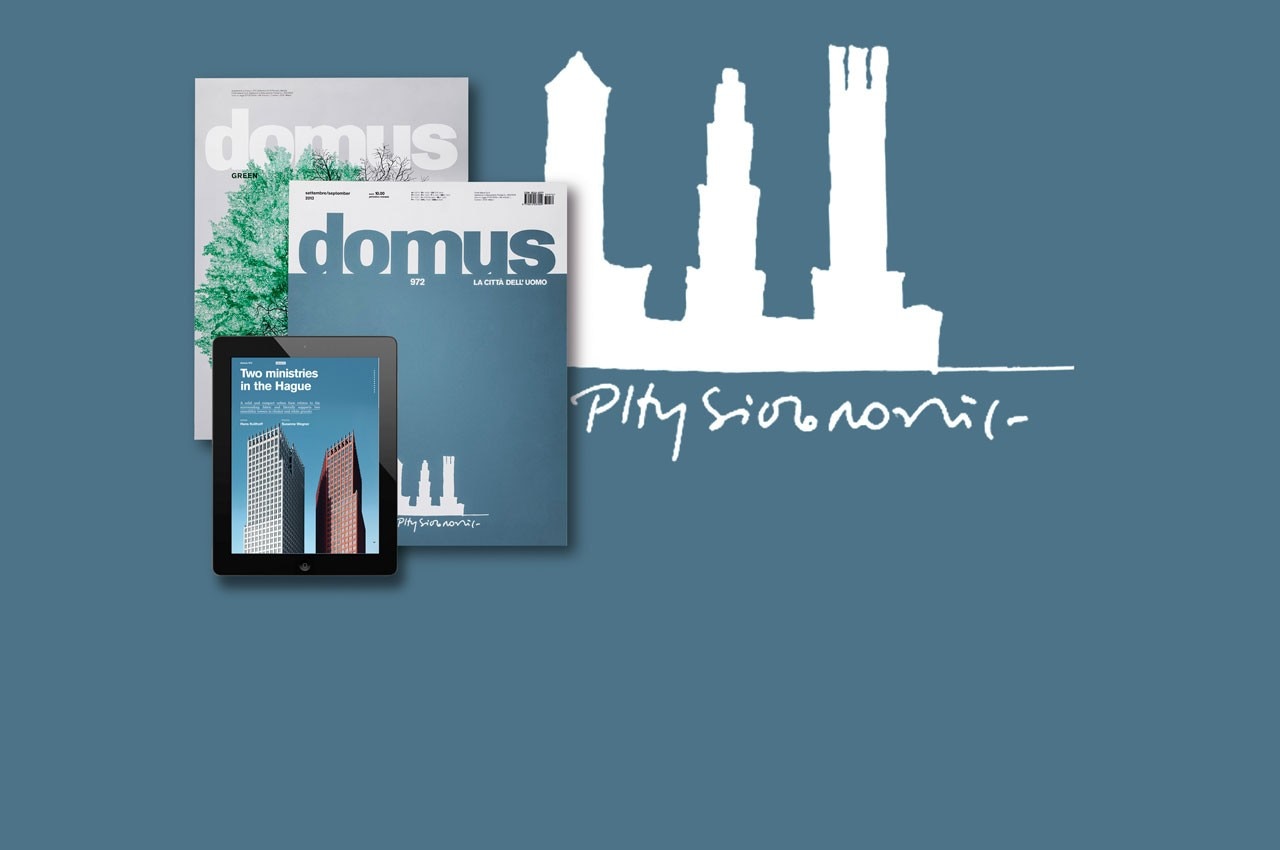But today the spate of instant, seemingly limitless news at everyone’s fingertips received from the new media has made the magazine a no longer fully efficacious vehicle in that respect. For these reasons Domus is changing. The new Domus will be primarily a means of deeper investigation. Its main objective will be to recreate the collective conditions indispensable to a brighter prospect of architecture and related discipline. The ambition of this Domus is to forge, month by month and issue by issue, a new outlook on contemporary architecture. It will be a non-sectarian magazine addressed to an ever-wider readership. To achieve that aim, Domus will be aided by a College of Masters and by a Study Centre in addition to its own traditional editorial department.
Editorial
Each month the editorial will discuss matters of architecture and its creation, in the quest for architecture that is appropriate for our times, properly adapted and indissolubly related to it. We would like for architecture to be clear and comprehensible, capable of identifying problems and proposing solutions, directing the work of individuals and helping them to be free to fully express their talent and capabilities, but within a clear and shared framework.
Confetti
While the projects section is the mainstay of the magazine, representing the synthetic and final result of the architect’s work, the Confetti section is its counterpoint. The Confetti will cover everything needed by architects to do what they do. Numerous and coloured, the Confetti will report on everything involved in architects’ work: their background, the organisation of their offices, their way of working, but also the tools of their trade, details, technologies, materials, innovation, thoughts, ambitions and hopes.
Projects
The bearing section of the magazine will publish a selection from the most significant works of urban planning, architecture, interiors and design. Each project will be thoroughly documented, from the images best suited to illustrate it, to technical drawings, models and architects’ sketches. Preferably, the description will be left to that of the architects’ own reports, without superimposing any interpretations. In this section the project will take the lion’s share and be presented for what it is: the product of work.
Rassegna
Rassegna is a monographic and thematic dossier. In a supple, precise and exhaustive manner, it informs architects, but also other people not in the trade, about the products and materials available to building and interior design today: an indispensable and rapid picture of all the latest and best products offered by industry to the architect and designer in their work or to users for their own necessities.
Feedback
Feedback will feature the attachment between an author and a city by proposing a special itinerary that will be unique on each occasion. The protagonist of this section is not the city featured in Feedback, but the city rendered by each particular author by means of a personal and intimate description, as if suggesting to a visiting friend what to go and see in the author’s home town.
Elzeviro
The Elzeviro closes the magazine. As an homage to the fine invention by various Italian daily newspapers at the beginning of the last century – a leading third-page article on cultural matters – a feature with this title in the new Domus will host short essays by leading contemporary figures who are not architects. It will provide a different angle “from outside” on the same topics covered by the magazine: living, the city and humanity.
The College of Masters
The establishment of a college, comprising some of the most prominent and established figures in contemporary architecture, reflects a clear-cut choice. Masters are indispensable for their presence, opinions and incitement, but also for their advice. We are convinced that between them and the younger generations a special, friendly relationship can be re-established, containing the capacity to carry the discipline forward. We wish to “examine our contemporaneity through the eyes of these masters, who make their discoveries where others have ceased to look.”
Domus Study Centre
The purpose of our Study Centre, operated by young architects and scholars, is to carry out research for the magazine, in order to explore the many issues of our past and present and to develop materials useful to architects today in their efforts to progress into the future. The Study Centre will give aid to the editorial staff, will be responsible for keeping our website up to date and for organising such exhibitions and events as the magazine may wish to stage in the course of time.
Opening photo: drawing based on a sketch (right) by Hans Kollhoff for two Dutch ministries in The Hague, a project published in this issue. The sketch shows the architect’s interpretation of the evolution of the city’s volumes, from the 19th-century block to modern skyscrapers, resulting in a physiognomy
of architecture.


